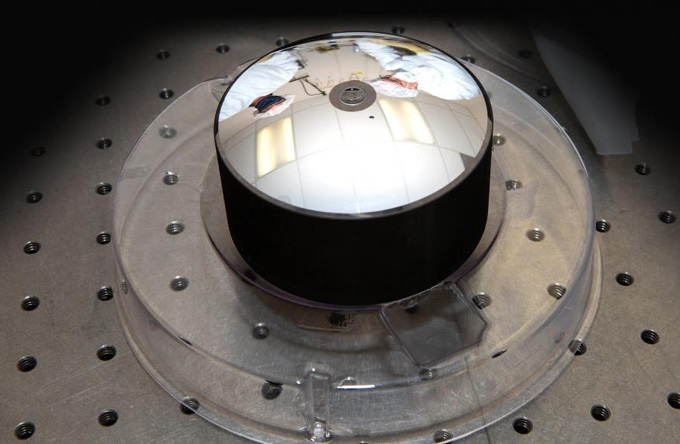Solid Glass Telescope is Built for Outer Space
20.08.2020
This new telescope is tiny and durable—just right for today’s fleet of smaller satellites.
Every modern satellite has a star tracker or two. These navigational telescopes attach to the outside of satellite so they can view the sky. They lock-on to a known star, compare the satellite’s position relative to the star’s position, then calculate which direction the satellite is pointed in and its orientation.
Typically, space telescopes have two optical mirrors—a larger primary one and a smaller secondary reflector—that face each other. If the mirrors go out of alignment, the image becomes fuzzy. To keep the mirrors aligned, an expensive structure holds them in place. The design makes the scopes prone to damage from vibrations on take-off. That’s why many satellites carry two, or sometimes even more, star trackers; there’s a back-up in case one fails.
This approach might work well with traditional satellites, which are relatively large, but it is far less than ideal for today’s versions. Researchers today are looking to stretch budgets, so they are building nanosatellites (about the size of a large shoebox and weighing less than 22 lb) and microsatellites (about the size of a dorm refrigerator and weighing several hundred pounds).

A telescope, dubbed V4 and an identical twin to this one, flew on LLNL’s GEOstare1 mission, where it was employed to demonstrated its ability to maintain situational awareness for spacecraft’s controls system and ground controllers.
When spacecraft are that small, space (volume) and weight become even more critical and must be used sparingly. To make the most of the limited payload on these smaller satellites, researchers at Lawrence Livermore National Laboratry are developing a small monolithic telescope (MonoTele).
It consists of a single slab of fused silica, letting it act as an optic lens without mirrors. Instead, optical shapes and reflective coatings on the ends of the block turns it into a solid telescope. It never needs to be aligned, greatly simplifying design while minimizing size, weight and power needs. With far fewer moving parts, it is more durable and less likely to be damaged in flight.
MonoTele space telescopes ranging in size from one inch (called the minimonolith) to 14 in. have been built and tested. Several have already flown in space and performed well. Going forward, they will be used in nano satellites for observing Earth, establishing situational awareness, and navigation.
Livermore engineers will work on the MonoTele to operate in other wavelength bands, such as ultraviolet and short-wave infrared, and as a spectrometer instrument. They also want to add compact, low-power focusing mechanisms for missions requiring more capable and flexible optical sensors.
Source: www.machinedesign.com
Stephen J. Mraz




































